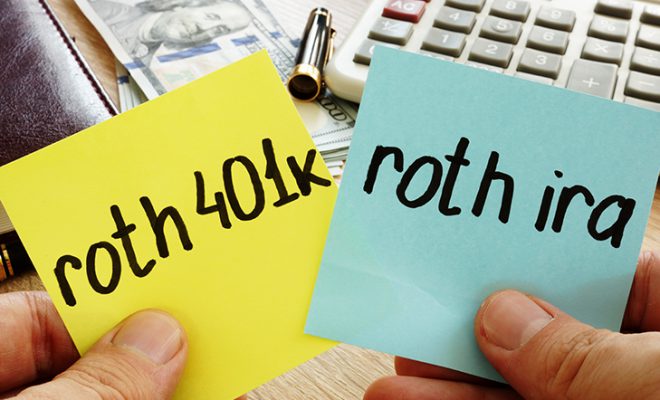Pension Plans: Fancy Projections, Dangerous Outcomes

Over the years, many Americans have come to believe that a pension plan is a gold standard when it comes to retirement benefits. However, this may not be the case always, especially in today’s political environment.
Earlier, the Washington Post reported that the current Republican administration under President Donald Trump is considering to reform the tax laws surrounding retirement plans. The objective is to place limits on how much workers can save each year.
In such a scenario, a pension plan might not be the best option for you. Many workers are already saving for retirement using dividend-paying life insurance policies instead of conventional pension plans. If you are still considering investing in a pension plan, you should know exactly what you are getting into.
Table of Contents
Pension Plans: Do the Outcomes Always Match the Projections?
It’s an undeniable fact that any kind of financial planning requires estimations and projections. This holds true in the case of pension plans too. What needs to be noted is that the final outcome might not always live up to the initial projection. Let’s have a look at some of these projections and the risks that they carry.
The Assumed Rate of Return Can be Tricky
The assumed rate of return is what companies and individuals assume the assets in any fund will return over the long term. It is one of the most critical aspects of any pension plan. By its very own nature, the assumed rate of return is something that relies heavily on assumptions and predictions. As such, even a small difference in the assumed rate of return can severely damage the perceived sustainability of a pension plan.
For instance, through compound interest, an 8% assumed rate of return over a period of 30 years turns $1 million into $10.9 million. Meanwhile, a more conservative 6.5% assumed rate of return turns $1 million into only about $7 million in the same time period.
As you can clearly see, the difference is huge – nearly $4 million to be precise. Oftentimes, organizations increase the assumed rate of interest on pension plans to lower their annual contribution towards the fund. This is incredibly short-sighted and irresponsible. When it comes to pension plans, it is the prerogative of organizations to act in the best interest of the fund. However, this is not how many organizations operate. Instead, they protect their own interests rather than those of the pension receiver.
Small Fees Can also Hurt Your Savings
Your savings can take a big hit because of the fees that you pay towards a pension plan. Initially, most pension plans, especially government-sponsored ones, seem to have a seemingly small fee amount. However, the Department of Labor suggests that paying only 1% of fees annually can cut your overall savings by up to 28% over a period of 35 years, assuming an annual return rate of 7%.
The unfortunate truth is that almost all pension plan participants do pay at least 1% annually as fees. Moreover, although new laws that require more transparent fee disclosures have been instated in place, recent studies have shown that many Americans are still unaware of the exact fees that they are paying.
In the end, while it is indeed true that most pension plans only require you pay a relatively small fee amount, it can still deplete your overall savings in the future.
Plans are Subject to Change
Another big issue with 401(k) and other similar plans is that they are subject to change at any point in time. Once you’ve invested in such a pension plan, the government and your company might change the rules of your plan and/or your participation fees without any warning whatsoever. You might be happy with the terms when you opt for a plan in the beginning, but do bear in mind that these terms can change with little or no notice at all.
For instance, a renowned company like IBM has also been known to change their terms in the past. In 2013, the company decided to pay its required contributions towards the end of each year rather than paying a matching contribution throughout the duration of the year. This was in complete contrast to what workers had come to expect through their experiences in the past.
Ultimately, you might think that your pension plan is safe and affordable, but that is liable to change in the future and you won’t be able to do much about it.
TDFs are Quite Risky Despite the Hype
Target-date funds (TDFs) are very common in 401(k) plans. Based on when you expect to retire, the asset mix in TDF funds is adjusted from time to time, which is a favorable thing for you. However, TDFs mostly carry a fee amount that is much higher than those of other mutual funds. Moreover, even though TDFs were initially designed to minimize your risk, there is no guarantee whatsoever and you might end up losing money.
In the past, the Government Accountability Office has reported that the largest TDFs lost nearly 31% of their money between 2005 and 2009. In comparison, the Dow Jones Industrial Average ended up losing only 1.61% during the same period.
As you can realize from this statistic, all the positive hype around TDFs doesn’t mean that they are a completely risk-free option. Apart from paying higher fees, you are liable to suffer losses too.
To Sum it Up
The bottom line is that pension plans do have certain fancy projections that can lead to dangerous outcomes. Therefore, you need to invest your time and carefully evaluate your pension plan rather than just opting for it blindly. So, conduct diligent research and know beforehand how much you’ll have to pay as fees. Furthermore, keep in mind that all investments, including TDFs, do not carry any guarantees whatsoever and might just end up harming your financial situation.
If you require any kind of assistance regarding pension plans, get in touch with top financial advisors today.

















